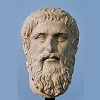4: The Greek World
- Page ID
- 132263
\( \newcommand{\vecs}[1]{\overset { \scriptstyle \rightharpoonup} {\mathbf{#1}} } \)
\( \newcommand{\vecd}[1]{\overset{-\!-\!\rightharpoonup}{\vphantom{a}\smash {#1}}} \)
\( \newcommand{\dsum}{\displaystyle\sum\limits} \)
\( \newcommand{\dint}{\displaystyle\int\limits} \)
\( \newcommand{\dlim}{\displaystyle\lim\limits} \)
\( \newcommand{\id}{\mathrm{id}}\) \( \newcommand{\Span}{\mathrm{span}}\)
( \newcommand{\kernel}{\mathrm{null}\,}\) \( \newcommand{\range}{\mathrm{range}\,}\)
\( \newcommand{\RealPart}{\mathrm{Re}}\) \( \newcommand{\ImaginaryPart}{\mathrm{Im}}\)
\( \newcommand{\Argument}{\mathrm{Arg}}\) \( \newcommand{\norm}[1]{\| #1 \|}\)
\( \newcommand{\inner}[2]{\langle #1, #2 \rangle}\)
\( \newcommand{\Span}{\mathrm{span}}\)
\( \newcommand{\id}{\mathrm{id}}\)
\( \newcommand{\Span}{\mathrm{span}}\)
\( \newcommand{\kernel}{\mathrm{null}\,}\)
\( \newcommand{\range}{\mathrm{range}\,}\)
\( \newcommand{\RealPart}{\mathrm{Re}}\)
\( \newcommand{\ImaginaryPart}{\mathrm{Im}}\)
\( \newcommand{\Argument}{\mathrm{Arg}}\)
\( \newcommand{\norm}[1]{\| #1 \|}\)
\( \newcommand{\inner}[2]{\langle #1, #2 \rangle}\)
\( \newcommand{\Span}{\mathrm{span}}\) \( \newcommand{\AA}{\unicode[.8,0]{x212B}}\)
\( \newcommand{\vectorA}[1]{\vec{#1}} % arrow\)
\( \newcommand{\vectorAt}[1]{\vec{\text{#1}}} % arrow\)
\( \newcommand{\vectorB}[1]{\overset { \scriptstyle \rightharpoonup} {\mathbf{#1}} } \)
\( \newcommand{\vectorC}[1]{\textbf{#1}} \)
\( \newcommand{\vectorD}[1]{\overrightarrow{#1}} \)
\( \newcommand{\vectorDt}[1]{\overrightarrow{\text{#1}}} \)
\( \newcommand{\vectE}[1]{\overset{-\!-\!\rightharpoonup}{\vphantom{a}\smash{\mathbf {#1}}}} \)
\( \newcommand{\vecs}[1]{\overset { \scriptstyle \rightharpoonup} {\mathbf{#1}} } \)
\( \newcommand{\vecd}[1]{\overset{-\!-\!\rightharpoonup}{\vphantom{a}\smash {#1}}} \)
\(\newcommand{\avec}{\mathbf a}\) \(\newcommand{\bvec}{\mathbf b}\) \(\newcommand{\cvec}{\mathbf c}\) \(\newcommand{\dvec}{\mathbf d}\) \(\newcommand{\dtil}{\widetilde{\mathbf d}}\) \(\newcommand{\evec}{\mathbf e}\) \(\newcommand{\fvec}{\mathbf f}\) \(\newcommand{\nvec}{\mathbf n}\) \(\newcommand{\pvec}{\mathbf p}\) \(\newcommand{\qvec}{\mathbf q}\) \(\newcommand{\svec}{\mathbf s}\) \(\newcommand{\tvec}{\mathbf t}\) \(\newcommand{\uvec}{\mathbf u}\) \(\newcommand{\vvec}{\mathbf v}\) \(\newcommand{\wvec}{\mathbf w}\) \(\newcommand{\xvec}{\mathbf x}\) \(\newcommand{\yvec}{\mathbf y}\) \(\newcommand{\zvec}{\mathbf z}\) \(\newcommand{\rvec}{\mathbf r}\) \(\newcommand{\mvec}{\mathbf m}\) \(\newcommand{\zerovec}{\mathbf 0}\) \(\newcommand{\onevec}{\mathbf 1}\) \(\newcommand{\real}{\mathbb R}\) \(\newcommand{\twovec}[2]{\left[\begin{array}{r}#1 \\ #2 \end{array}\right]}\) \(\newcommand{\ctwovec}[2]{\left[\begin{array}{c}#1 \\ #2 \end{array}\right]}\) \(\newcommand{\threevec}[3]{\left[\begin{array}{r}#1 \\ #2 \\ #3 \end{array}\right]}\) \(\newcommand{\cthreevec}[3]{\left[\begin{array}{c}#1 \\ #2 \\ #3 \end{array}\right]}\) \(\newcommand{\fourvec}[4]{\left[\begin{array}{r}#1 \\ #2 \\ #3 \\ #4 \end{array}\right]}\) \(\newcommand{\cfourvec}[4]{\left[\begin{array}{c}#1 \\ #2 \\ #3 \\ #4 \end{array}\right]}\) \(\newcommand{\fivevec}[5]{\left[\begin{array}{r}#1 \\ #2 \\ #3 \\ #4 \\ #5 \\ \end{array}\right]}\) \(\newcommand{\cfivevec}[5]{\left[\begin{array}{c}#1 \\ #2 \\ #3 \\ #4 \\ #5 \\ \end{array}\right]}\) \(\newcommand{\mattwo}[4]{\left[\begin{array}{rr}#1 \amp #2 \\ #3 \amp #4 \\ \end{array}\right]}\) \(\newcommand{\laspan}[1]{\text{Span}\{#1\}}\) \(\newcommand{\bcal}{\cal B}\) \(\newcommand{\ccal}{\cal C}\) \(\newcommand{\scal}{\cal S}\) \(\newcommand{\wcal}{\cal W}\) \(\newcommand{\ecal}{\cal E}\) \(\newcommand{\coords}[2]{\left\{#1\right\}_{#2}}\) \(\newcommand{\gray}[1]{\color{gray}{#1}}\) \(\newcommand{\lgray}[1]{\color{lightgray}{#1}}\) \(\newcommand{\rank}{\operatorname{rank}}\) \(\newcommand{\row}{\text{Row}}\) \(\newcommand{\col}{\text{Col}}\) \(\renewcommand{\row}{\text{Row}}\) \(\newcommand{\nul}{\text{Nul}}\) \(\newcommand{\var}{\text{Var}}\) \(\newcommand{\corr}{\text{corr}}\) \(\newcommand{\len}[1]{\left|#1\right|}\) \(\newcommand{\bbar}{\overline{\bvec}}\) \(\newcommand{\bhat}{\widehat{\bvec}}\) \(\newcommand{\bperp}{\bvec^\perp}\) \(\newcommand{\xhat}{\widehat{\xvec}}\) \(\newcommand{\vhat}{\widehat{\vvec}}\) \(\newcommand{\uhat}{\widehat{\uvec}}\) \(\newcommand{\what}{\widehat{\wvec}}\) \(\newcommand{\Sighat}{\widehat{\Sigma}}\) \(\newcommand{\lt}{<}\) \(\newcommand{\gt}{>}\) \(\newcommand{\amp}{&}\) \(\definecolor{fillinmathshade}{gray}{0.9}\)This chapter’s title refers to the Greek World, rather than Greece. While Greece is a unified country today, the territory of the present-day country was not unified under one rule until the rise of the Macedonians in the fourth century BCE. Instead, the basic unit of organization in the period covered in this chapter was the polis, an independent city-state, which consisted of a walled city that controlled and protected the farmland around it. Historians estimate that close to 1,500 of these city-states dotted the ancient Greek landscape.
- 4.2: Geography and Topography
- Each polis possessed its own form of government, law-code, army, cults of patron gods, and overall culture that set it apart from the other city-states. While the two most famous poleis, Athens and Sparta, controlled vast territories of farmland, most city-states were small, with a population of just a few thousand citizens. Furthermore, the Greek world in antiquity encompassed much more than present-day Greece, extending as far as Italy and the territories of modern-day Turkey and Ukraine.
- 4.3: Periods of Greek History
- Historians today separate Greek history into particular periods, which shared specific features throughout the Greek world: (1) Bronze Age, (2) The Dark Ages, (3) Archaic Period, (4) Classical Period, and (5) Hellenistic Period.
- 4.4: From Mythology to History
- Mythology refers to stories that are clearly false, of long-forgotten gods and heroes and their miraculous feats. History, on the other hand, refers to actual events that involved real people. And yet, the idea that the two are opposites would have seemed baffling to a typical resident of the ancient Mediterranean world. Rather, gods and myths were part of the everyday life, and historical events could become subsumed by myths just as easily as myths could become a part of history.
- 4.5: Archaic Greece
- The Archaic period was a time of growing contacts and connections between different parts of mainland Greece. Furthermore, it was a time of expansion, as the establishment of overseas colonies and cities brought the Greeks to Italy and Sicily in the West, and Asia Minor and the Black Sea littoral in the East. Furthermore, while Greeks in the Archaic period saw themselves as citizens of individual city-states, this period also witnessed the rise of a Pan-Hellenic identity.
- 4.6: The Classical Period
- The story of the Greeks in the Classical Period is best described as the strife for leadership of the Greek world. First, Athens and Sparta spent much of the fifth century BCE battling each other for control of the Greek world. Then, once both were weakened, other states began attempting to fill the power vacuum. Ultimately, the Classical Period will end with the Greek world under the control of a power that was virtually unknown to the Greeks at the beginning of the fifth century BCE: Macedon.
- 4.7: Hellenistic Period
- Historians consider the death of Alexander to be the beginning of the Hellenistic Period. While city-states continued to exist, the main unit of organization was the great Hellenistic kingdoms, which encompassed much greater territory and contributed to the thorough Hellenization of the Eastern Mediterranean and the Middle East. The age also coincided with the rise of Rome as a military power in the West. Ultimately, the Hellenistic kingdoms were conquered and absorbed by Rome.
- 4.8: Methodology- Sources and Problem
- Modern scholars of ancient history are notoriously obsessed with evaluating their primary sources critically, and with good reason. Studying Greek history, especially in its earliest periods, is like putting together a puzzle, most of whose pieces are missing, and some pieces from another puzzle have also been added in for good measure. Greek history requires careful consideration of a wide range of sources, which fall into two broad categories: literary sources and material culture.
Thumbnail: Roman bronze reduction of Myron's Discobolus, 2nd century AD (Glyptothek, Munich). (CC BY 2.5; MatthiasKabel).


